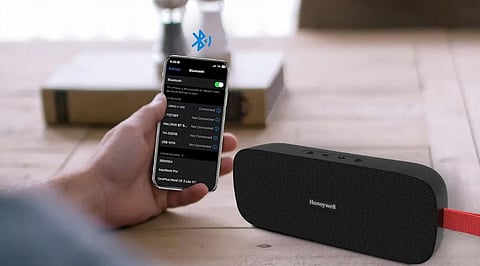

There’s something magical about pressing play and having your favorite music, podcast, or movie soundtrack fill the room. But if you’ve ever wondered why the sound feels muffled in one spot and too sharp in another, the culprit often isn’t the device itself—it’s where you’ve placed it. Think of speaker placement like arranging furniture: the right setup makes the whole space feel more inviting, while the wrong one can throw off the vibe.
A simple way to test this is by moving your bluetooth speaker around the room and noticing how the sound changes. Place it low, and the music may feel flat. Set it at ear level, and suddenly it comes alive. Placement is more powerful than most people realize.
Sound doesn’t just travel in a straight line; it spreads. If you put your speaker directly on the floor, much of the sound gets absorbed instead of spreading through the room. A better option is to elevate it on a table, shelf, or stand at roughly ear level.
Think about how restaurants position their sound systems. The speakers are never hidden behind chairs or tucked under tables; they’re elevated so sound carries evenly. At home, you don’t need a professional setup, but getting the speaker off the ground makes a noticeable difference.
Also, avoid aiming the speaker directly into a wall. Hard surfaces reflect sound, which can make music feel harsh or echoey. Tilting it slightly into open space helps the sound breathe.
Every room has its own personality when it comes to sound. A cozy living room with plush couches and rugs absorbs audio well, making it warm and smooth. On the other hand, a kitchen with tiled floors and bare counters can cause sound to bounce around.
This is similar to how concert halls are designed with carefully considered acoustics. Even at home, you can borrow the same principles:
Add soft furnishings, such as curtains, carpets, or wall art, to help balance the sound.
Avoid placing your speaker in a corner, where low notes can get trapped and feel “boomy.”
If possible, try positioning it near the center of a wall instead of crammed into an edge.
Placement should work for your lifestyle, not against it. If you’re someone who cooks often, having a speaker in the kitchen might be ideal—but keep it away from the stove or sink where steam and splashes could damage it. If you work from home, consider a setup that distributes sound evenly throughout your office without distracting you during calls.
For movie nights, place the speaker where it complements your TV or projector screen. Imagine the sound as part of the scene—it should feel like it’s coming toward you, not from behind your sofa or under a shelf.
Many modern speakers are equipped with smart technology that adjusts the sound according to their placement. Still, the basics matter most. If you want portability, such as moving music from the living room to the balcony, it helps to experiment until you find the optimal setting.
A practical example: if you’re hosting a backyard barbecue, placing the speaker near a wall or fence can help “push” sound outward, making it easier for everyone to hear. Inside, you might want it closer to the center so music reaches both the sofa and the dining table.
Great sound at home isn’t about buying the most expensive gear; it’s about making the most of what you have. With a little attention to placement, you can turn an ordinary setup into something that feels immersive and enjoyable.
So the next time you hit play, experiment. Move your speaker a few feet higher, tilt it into the room, or shift it away from the corner. You might be surprised at how such small changes transform the experience.
After all, music, movies, and podcasts are part of daily life’s soundtrack, so why not make sure they sound as good as possible?
